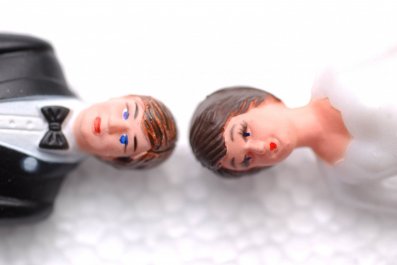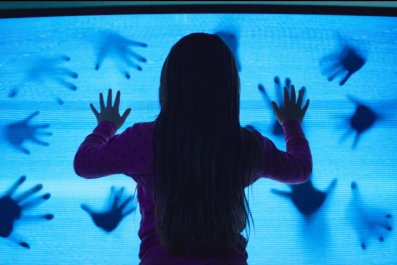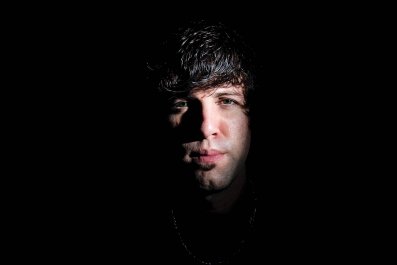In many ways, Steven was a typical 7-year-old. He went to school, attended birthday parties and played sports with his classmates and younger brother. Steven (not his real name) wasn't perfect—he consistently defied his parents and teacher, turning arguments over trifles into battles that would last hours, and he frequently behaved aggressively toward his younger brother. It was difficult for the adults in Steven's life to manage him, but nothing triggered concerns about his psychological state.
Then Steven's behavior became more alarming. At a cousin's birthday party, he broke some of the birthday boy's toys and showed no remorse. His parents hypothesized that he acted out because another child was the center of attention—Steven had always been spiteful toward other children, they said. His teacher observed similar behavior at school; sometimes he would blame other children for his poor performance at games or sports, then would seek revenge when not under a supervisor's watchful eye. Steven's behaviors were "predatory," his teacher said. Eventually, he was referred to a psychologist who determined that the behavior stemmed from callous-unemotional tendencies; these traits manifest themselves in different ways in different children, but callous-unemotional kids show little empathy for others or remorse for their own actions, and they are prone to violence. The traits are also part of a suite of characteristics together called psychopathy.
Violent adult psychopaths, the ones who kill without remorse, are both born and made: A person might have had a genetic predisposition for these behaviors, but childhood traumas and a lack of connection to other people bring them out. Which is why, over the past few years, psychologists have been working to develop interventions for children with early signs of psychopathy. The treatments focus on connecting these kids with their peers and parents because those bonds can make a difference between an adult who is a violent offender or simply colder than the average person.
In Hollywood, psychopaths are violent, aggressive killers whose hallucinations are accompanied by maniacal cackling. But in real life, psychopathy is a much more nuanced behavioral disorder. A person who has psychopathic disorder (and antisocial personality disorder, a related illness that is considered by some health professionals to be either the same thing as or a subset of psychopathy), tends to be unemotional, manipulative, lacking empathy, overly willing to take risks and/or incapable of understanding punishment. None of these traits alone defines a psychopath, and not all psychopaths become violent criminal offenders; some successful members of society would likely be deemed psychopathic if assessed by a clinician.
Researchers fight hard to combat the stigma surrounding the word psychopath. In part, this means figuring out the neurological structures underpinning the behaviors that make adult psychopaths different. Sheilagh Hodgins, a professor of psychology at the University of Montreal, has conducted several experiments using MRIs on the brains of adult psychopaths and found that they are, in fact, hardwired differently—even if they're not violent. Hodgins found that these people all have abnormal connections between two deep parts of the brain, the posterior cingulate and the insular cortex, which usually help people understand punishment. In one study of preteen boys with callous-unemotional traits, she found similar structures. "This really confirms that there is a neural basis for what we're observing in terms of behavior, and that we need to take that into account as we try to develop an intervention," she says. It's important to note that while researchers have an idea of which neural structures are different in psychopaths, they're far from identifying all of such structures and pinpointing their roles.
The good news is that young brains are highly plastic, so even if a child has a particular neurological structure, he may not have it as an adult. In fact, several studies indicate that not all children who have callous-unemotional traits become adult psychopaths, especially if they're exposed to the right treatments at a young enough age.
David Hawes, a professor of psychology at the University of Sydney in Australia, recently stumbled upon one such treatment when he asked callous-unemotional study participants to play a computer game in which they were taught to recognize emotions in digital human faces—a therapy that had worked for children with autism. The parents were also given a few homework activities and asked to play the game with their child. In many cases, behavioral problems became much less frequent or severe. But the improvement wasn't because of the computer game—the kids didn't get any better at recognizing emotions. What happened, Hawes hypothesizes, is that because the treatment got parents and children working together, it changed the way they interacted, giving them a mutual understanding that didn't involve punishments, or yelling, or resentment on either side. In short, it allowed them to bond.
Parents, it turns out, can make or break a psychopath. Often, they will punish children behaving violently or callously, ignorant to the fact that their child's brain may be hardwired not to understand the punishment. This breeds resentment, making the relationship colder and inspiring a child to act out in more extreme ways, according to Randy Salekin, a psychology professor at the University of Alabama in Tuscaloosa.
Most of the therapies that have produced the best results for callous-unemotional children focus on training parents, says Hawes, though he is quick to point out that many of the sample sizes for these studies have been small. These therapies also seem to be more effective when administered earlier in a child's development. So psychopathy researchers are now pushing for interventions with children at increasingly early ages—sometimes as young as 2.
The problem, though, is that it's hard to identify at-risk children at such a young age. Some children start showing signs of psychopathy as early as 15 months. But usually kids don't get recommended for treatment until they start to behave or socialize in ways that trouble parents or teachers. That, of course, requires someone to notice—and callous-unemotional traits are often found in children who were severely neglected or abused by their parents. "Callousness and unemotional traits could be adaptive for some people," Salekin says. In other words, the very thing that causes the behaviors could also obscure them from the professionals that could help; some children will grow up with the disorder unaddressed until they are finally recommended to a psychologist after contact with the law, often in their preteen or teen years.
Compounding the issue is the fact that checking MRIs for the neural structures of psychopathy doesn't work for kids, in part because researchers don't know exactly which structures they're searching for. Right now, the only thing to do is to look for behavioral abnormalities, such as a lack of empathy and deceitfulness, and that's not simple. The behavior of kids with autism or attention deficit hyperactivity disorder, known as ADHD might be similarly antisocial or lacking in empathy, but their neurological structures are totally different than those of kids with callous-unemotional traits.
To isolate exactly what's going on with a child, a clinician will look at behavioral assessments from a child's parents and teachers, and administer oral and written tests to identify any characteristics associated with psychopathy. But few of these well-established psychopathy tests are designed for children, so psychologists mostly use them as screening tools, a quick way to weed out children who may have other disorders and treat them appropriately. There's no standard assessment, and there's still no test to help researchers understand how severe a disorder may be.
This uncertainty is what beguiles researchers. It's nearly impossible to refine a treatment for an illness that lacks clear definition. But there is, at least, movement in the right direction.
After treatment with Hawes, Steven's behavior improved considerably. He was less aggressive toward his peers; his mother said he seemed to be "maturing," and noted that he sometimes even displayed caring behaviors toward his sibling. Recently, Steven's mother told Hawes she saw Steven comforting his younger brother, who was crying after falling off a scooter. "She was really very shocked to see that kind of behavior," says Hawes. "She thought it was something she would never see from him."
Follow Alexandra Ossola at @alexandraossola.





















